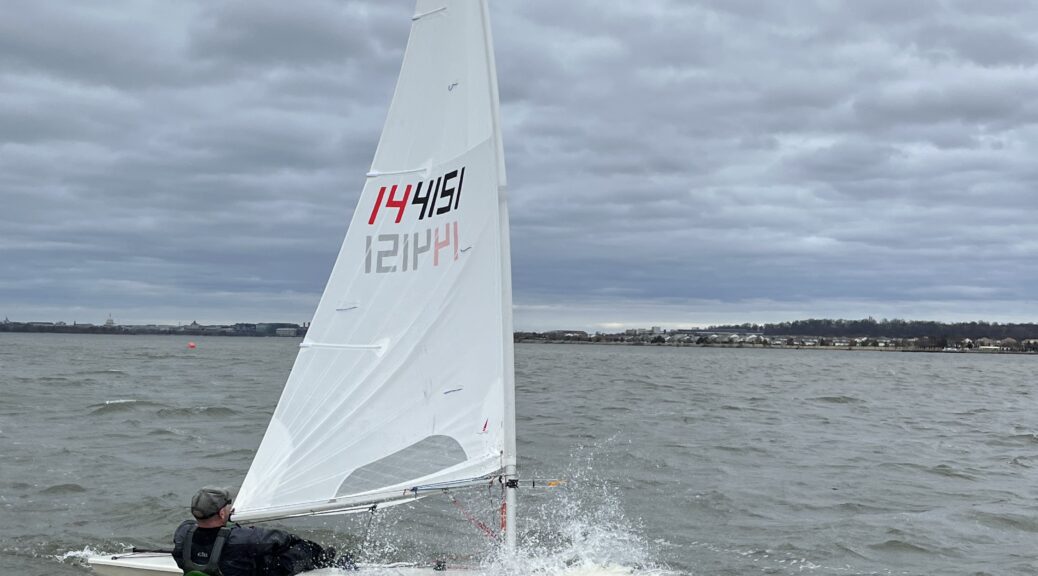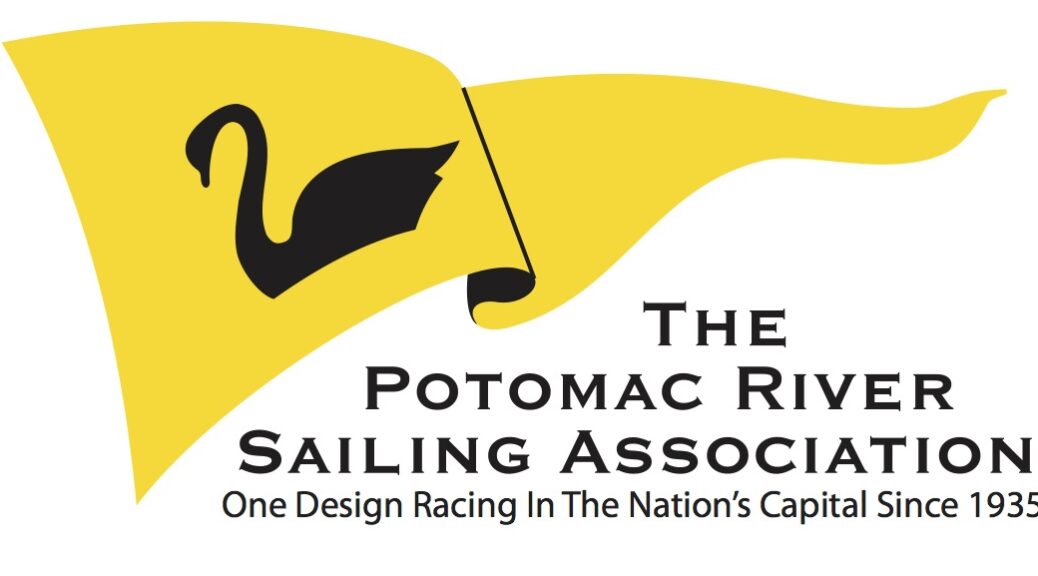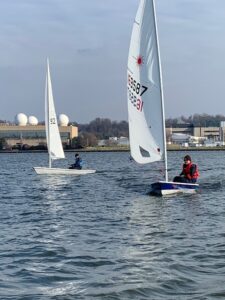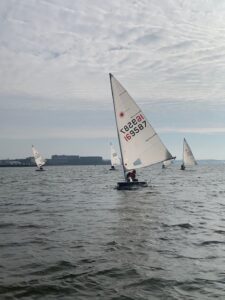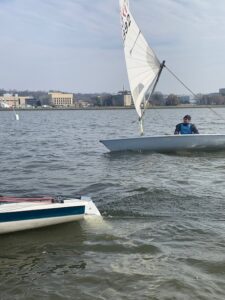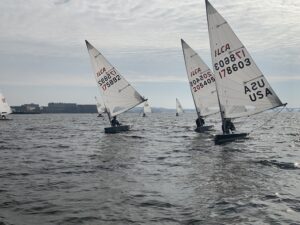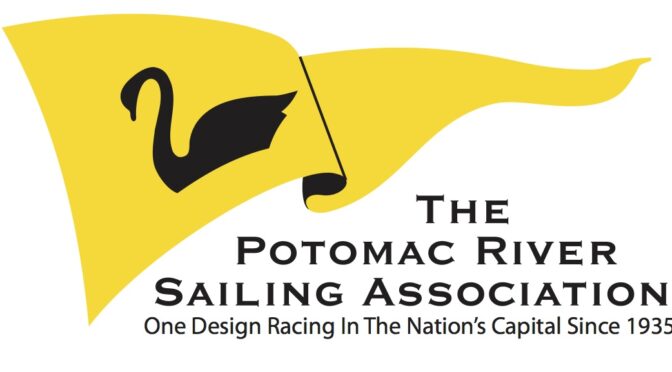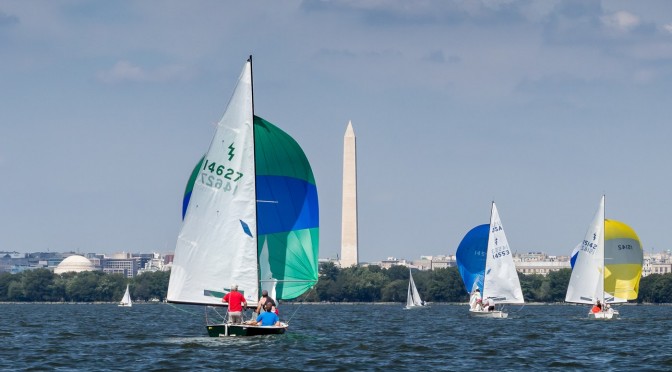Greetings PRSA Sailors,
We are just a few weeks away from the start of the Fall Series! On behalf of your PRSA Executive Committee, I have some important announcements to share as well as some important reminders for the Fall Series.
Fall Series RC Signup: please take a moment to select your RC duties as per Tyler’s 20 August email.
Fall Series #1: show up and race on Sunday, Sept. 7, to kick off the Fall Series. Then, make sure to stick around for the BYO food/beverage BBQ afterwards. I’m out of town on the 7th but Mike Scardaville has agreed to serve as grill master (thanks Mike!). Invite your friends and family to join us, even if they’re not sailing, so that they can meet folks!
President’s Cup: register now for our signature Fall Regatta!
Bylaws Revisions: our current set of Bylaws mandated a review of the dues structure in 2025. With thanks to the PRSA Executive Committee – and to Ed (current PRSA Secretary) and Melissa (prior Secretary, Social Director and Outreach Director) in particular for lots of organizational and legal sleuthing to help us restore PRSA’s official incorporation status and to modernize our bylaws – we have an updated set of PRSA Bylaws for consideration, and a vote, for the 2025 AGM. Our revised Bylaws, which include an updated dues structure as well as revised and updated Executive Committee and ExecCom Support Roles – modernize and streamline PRSA. We have done our best to balance the dues structure with very concrete realities – declining (but stabilized) membership levels accompanied by steady increases in costs – and to update the various roles required to run the organization to meet current and future needs. Please review the proposed bylaws carefully and make a plan, now, to attend our 2025 Annual General Meeting and Awards Ceremony on Saturday, Nov. 15 (exact time and place TBA) to consider and vote on the revised Bylaws. Please note that at the AGM we will hold just one vote on the adoption of the revised Bylaws (we will not be entertaining motions to amend or adjust the revised Bylaws). If passed, the incoming board can amend and improve upon the bylaws later.
Bylaws Revisions: Why We’re Updating
Our current bylaws mandated a review of the dues structure in 2025. With thanks to the PRSA Executive Committee – with extra special thanks to Ed (current PRSA Secretary) and Melissa (former Secretary, Social Chair, and Outreach Director) for their extensive organizational and legal research – we have not only reviewed dues, but also undertaken a broader modernization of PRSA’s bylaws. This process has helped us restore PRSA’s official incorporation status and align our bylaws with current best practices for member-run associations. If passed, the incoming board can amend and improve upon the bylaws later if needed.
The revised bylaws we will vote on at the 2025 AGM include:
- Updated dues structure: Adjusted to reflect today’s economic realities, with a model that accounts for both stabilized membership levels and rising operating costs. This ensures we can sustain high-quality racing, regattas, and social activities without overburdening members.
- Modernized officer and committee roles: Clarified responsibilities, added a Communications Director, and streamlined committee duties to reflect the way PRSA operates today (including website, outreach, regatta logistics, and social activities). These updates help distribute the workload more fairly and position us to meet future organizational needs.
- Improved governance: Bylaws now provide more flexibility and transparency in how decisions are made (e.g., Executive Committee authority, voting rules), making PRSA more nimble and resilient.
In short: these revisions modernize and streamline PRSA, balancing fairness to members with the practical needs of running our sailing association. We had some fun with technology in summarizing all of this, so for a non-official summary of key changes, please see below for a ChatGPT-generated summary (edited by Tyler and Aaron; note that this is neither an official version of the Bylaws nor an official record of the proposed changes, but it provides a pretty good summary).
Above all, please review the proposed bylaws carefully and plan to attend the 2025 Annual General Meeting and Awards Ceremony on Saturday, Nov. 15 (exact time and place TBA) to vote on their adoption. Note: The AGM will include a single vote on the revised bylaws as a whole. We will not be entertaining motions to amend or adjust the language at the meeting.
Potomac River Safety/Exclusion Zone: Tyler has confirmed with the DC Harbor Patrol via phone that the zone from last Spring has been removed. Hurray!
Awards Nominations: now is a good time to start to think about nominating PRSA Sailors for our Perpetual Awards! The nomination form (with awards descriptions) is available here and will be open through Friday, November 7.
Officer & Supporting Role Nominations: looking ahead to next year, we need some volunteers to fill some roles. Both Tyler’s term and my term end this fall (without renewal options). Please consider running for the Commodore and the Vice-Commodore positions! We need a complete Executive Committee to run our day-to-day operations and, in turn, ensure safe and fun racing. We will also be looking for a new ExecCom Officer: Communications Director (in charge of outreach, communications, social media, etc.). Finally, we will need volunteers to serve in the Scorer role as well as Spring Regatta Regatta Chair and President’s Cup Regatta Chair for 2026.
As always, please feel free to email us (prsaboard@gmail.com) if you have any questions. I look forward to seeing you all out on the water soon!
PRSA Bylaws Revisions 2025 FINAL
***********************************************************
Summary of Changes to the PRSA Bylaws*
Things That Stay the Same
- Name & Purpose: PRSA name, black swan pennant, and mission statement remain unchanged.
- Membership categories: Active, Associate, Junior, Honorary, and Life memberships remain in place with the same general rights (skippering, voting, committees, etc., depending on class).
- Race framework: PRSA continues Spring, Fall, and Frostbite Series..
- Fleet requirement: A fleet needs 5+ members to qualify as an active one-design fleet.
Key Changes in Membership (Article III)
- Junior membership age: changed from under 18 to under 25.
- Associate members: previously required to perform Race Committee (RC) duties; this duty has been removed.
- Dues:
- Current Bylaws: Fixed dues schedule (e.g. $130 Active multi-person, $100 single, $45 Associate, $40 Junior) with periodic increases every 3 years (+$10 for Active, +$5 for Associate/Junior).
- Proposed November 2025 Bylaws: New dues schedule for 2026 ($150 Active multi-person, $100 single, $50 Associate, $40 Junior) with annual 4% increases (rounded).
Key Changes in Officers & Governance (Article IV–VI)
- Board Size: Increased from 5 officers to 6 officers.
- New Officer Role: Communications Director added, responsible for public-facing outreach, social media, website, and chairing the Social Committee.
- Secretary duties expanded: Now responsible for official filings and maintaining organization good standing.
- Executive Committee composition:
- Jan 2025: Officers + Fleet Representatives (all voting).
- Nov 2025: Only officers are voting members; Fleet Representatives serve in an advisory role.
- Voting thresholds: Most votes now explicitly require a simple majority (50%+1) at both membership and Executive Committee levels (clarified in Nov 2025).
Key Changes in Committees (Article VII)
- Outreach Committee (Secretary-led) removed; duties reassigned to Communications Director portfolio..
- Social Committee: Now run by Communications Director instead of appointed Social Chair.
- Regatta Chairs: New role added — Rear Commodore appoints a Regatta Chair for each event, responsible for budget, logistics, NOR, SIs, and food/beverage.
- Auditing Committee: Present in Jan 2025 bylaws; removed in Nov 2025 version.
Key Changes in Amendments (Article X)
- Jan 2025: Amendments required a 2/3 vote of the membership at Annual Meeting (with 15 days’ notice).
- Nov 2025: Amendments can be passed in two ways:
- By a 2/3 super-majority of the Executive Committee.
- By 2/3 of the membership at the Annual Meeting (with 15 days’ notice).
Summary for Members
- Membership: Junior age expanded; dues structure shifted from flat 3-year increases to annual 4% increases.
- Governance: Expanded Board (6 officers), new Communications Director, clarified voting rules, and Fleet Reps moved to advisory status.
- Committees: Outreach eliminated, Social under Communications, Race Program expanded, new Regatta Chair role, Auditing removed.
- Amendments: Executive Committee now has the power to amend bylaws by super-majority, in addition to membership votes at AGM.
——————
* Summary generated by ChatGPT; edited by Tyler and Aaron. Note that this is an AI/LLM-generated summary, not an official version of the Bylaws nor the official record of the revisions.

